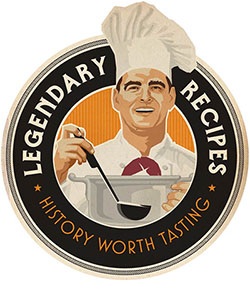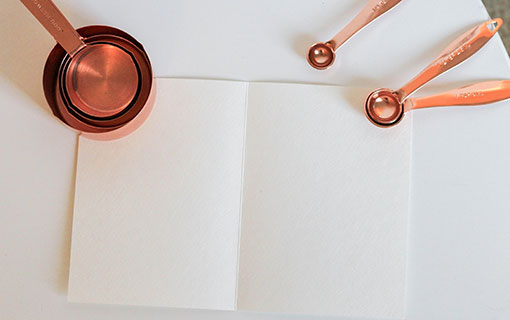For a decade the Cameo was the crème de la crème of Chicago restaurants, with a couple of deep-pocketed owners (Arthur Wirtz and James Norris, Sr.), a fabulously talented French chef (Jean Arnaudy), and customers who not only wanted the best but were more than happy to pay for it. Soon after it opened in 1946 the Cameo priced its inaugural New Year’s Eve celebration at $100 per person; it was thought to be the most expensive such party in the nation.
Wirtz, the driving force behind the Cameo, was a big man in a big city. He was an entrepreneur in the purest sense, amassing a fortune in the Depression by snapping up failed or failing businesses for next to nothing and then pulling them up to profitability. In 1929 he teamed up with Norris to buy the Detroit Falcons, a financially troubled franchise in the National Hockey League. They rebranded the team the Red Wings, built it into a success, and went on to buy Chicago Stadium, in 1936, and a controlling interest in another NHL team, the Chicago Black Hawks, in 1952. In 1949 Wirtz and Norris formed the International Boxing Club, which would be hugely profitable (promoting 47 of the 51 championship bouts held in the United States from 1955 to 1959). Wirtz and Norris, it was even reported, owned most of the stock in New York City’s Madison Square Garden.
Through most of this period Wirtz was also making lots of money with Sonja Henie, the Norwegian figure skater and movie star, producing her touring ice shows under the name “Hollywood Ice Revue” and also acting as her financial adviser. It was Wirtz, more than anyone else, who made figure skating and ice shows an established form of entertainment in the United States. Henie, at the height of her fame, was making as much as $2 million a year through her shows and tours, and on top of that had a slew of lucrative endorsement contracts. These activities made Henie, in her era, one of the wealthiest women in the world.
Henie split from Wirtz in 1950. It’s altogether possible that one of the investments Wirtz had arranged for her was in the Cameo, as it was later reported that Henie once owned a piece of the restaurant.
Norris died in 1952 at age 73, leaving an estate that was later valued at more than $4.2 million.
When the Cameo suddenly and quietly closed in mid-1956, Herb Lyon of the Chicago Tribune passed along the story that it was for “a summer of remodeling.” But within days Lyon learned the truth: The Cameo was for sale. A succession of suitors soon paraded through Lyons’s column in the Trib — Al Farber of the Loop Steak House, Sonny Kreda and Glenn Rodkin of the Prime Rib in Skokie, Herman Gittelson and Russ Kirkpatrick of the Embers — with the deal said to be “in the sizzle stage,” then “almost set,” then undone even as remodeling was underway, and then, finally, sealed. In December Lyon reported that Gittelson and Kirkpatrick would take over the Cameo, invest $100,000 in remodeling it, and open it the following March under a new name, which turned out to be “The Chase.”
Wirtz still had one big deal to make from the remains of the Cameo. In 1960 Hugh Hefner, the owner of Playboy magazine, was looking to open the world’s first Playboy Club in Chicago, and Wirtz managed to get the building at 116 East Walton Street in Hefner’s range of vision. Playboy was able to rent the building at a way-below-market rate with an agreement to give Wirtz a share of the profits. The Playboy Club remained in business there until 1986. Wirtz was said to have made far more in this way than the building was worth.

Champs-Élysées Potatoes
Ingredients
- 8 medium large baking potatoes (see note)
- 8 mushrooms
- 2 tablespoons butter, divided
- 8 tablespoons (4 ounces) vegetable oil, divided
- Salt to taste
- Pepper to taste
- Parsley, for garnish
Instructions
Peel the potatoes and slice the potatoes into thin matchsticks (1/8-inch thick) with a vegetable slicer or mandoline (or by hand), dropping them into a bowl of cold water as you cut. Drain the potatoes and dry them thoroughly with paper towels.
Slice finely mushrooms and pan fry these lightly in butter.
Use about 4 tablespoons of vegetable oil to grease a skillet. Then arrange 1 layer of raw potatoes to cover the bottom of the skillet. Spread a few mushrooms over the potatoes, then add another layer of potatoes, then mushrooms. Altogether you will have 4 layers of potatoes and three layers of mushrooms. Season to taste with salt and pepper each layer as you put into the skillet.
Put skillet on medium fire on top of stove and cover. Cook 10 minutes, then remove cover and add a little more oil (about 2 ounces). Step up fire and continue cooking five minutes on each side (turning potatoes) until potatoes are nice and brown. Drain oil out of skillet and finish potatoes with a nice chunk of butter. Sprinkle a little chopped parsley over them before serving.
Notes
While the original recipe calls for "Irish potatoes," any white baking potatoes will do.










No Comments